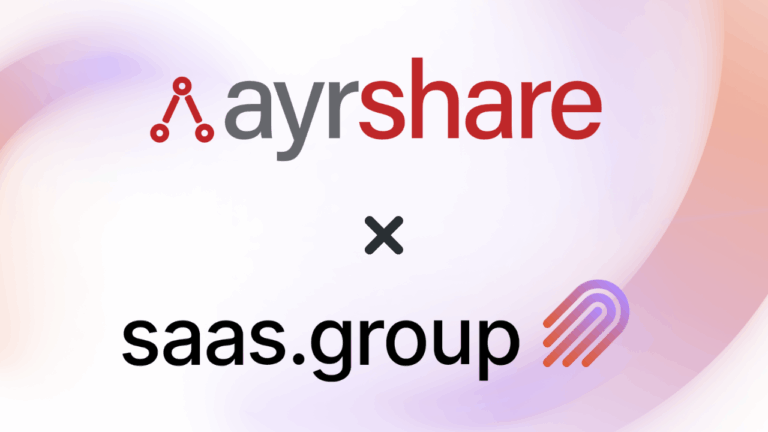Founders operating in the $50M–$250M range face a paradox: they’re often too small to fit public comps and too large for early-stage pricing frameworks.
AI is maturing rapidly, but without demonstrated results, valuations based on positioning and VC-backed raises remain speculative and difficult to justify. This article explores where valuation premiums could actually be realized from an exit perspective, and how mid-market companies can benchmark realistically.
According to a survey by The Boston Consulting Group (BCG), only 4% of companies have achieved advanced AI maturity and consistently generate substantial value across functions. Another 22% are just starting to show returns. The result: a narrow band of companies capture the majority of enterprise value. Meanwhile, hype cycles and shifting model architectures make consistent benchmarks hard to pin down.
Today, 62% of realized AI value is concentrated in core business functions, marking a shift from full-stack vertical integration to more efficiency-driven architectures.
In its February letter, Stripe reported seeing “an AI boom,” noting that AI startups are growing faster than traditional SaaS companies have historically, fueling potential buyer interest beyond investor hype and reshaping pricing logic.
But the central question is: Which AI-powered SaaS industries generate the most enterprise value from AI, and what multiples do they command?
Why AI valuation multiples are diverging in 2025
From full-stack ambition to function-specific ROI
The days of needing to “own the full stack” to justify high valuations are fading. In 2025, the most sought-after AI SaaS companies are modular, integrable, and ROI-driven. Buyers, both strategic and financial, are prioritizing ease of integration and short paths to impact over broad capability claims.
Vertical integration is giving way to modular, API-first solutions that slot easily into enterprise workflows. Buyers are prioritizing infrastructure and orchestration tools, especially those that support broader AI ecosystems, over standalone applications with limited adaptability. For SaaS founders, this means products that enhance existing workflows with measurable ROI are valued far more than broad, undifferentiated AI platforms.
Read: Tech M&A Trends in 2025
Only a few are extracting real enterprise value
What separates companies commanding 8–12x revenue from those stuck at 3–5x? Evidence. Buyers are paying for execution: customer outcomes, revenue impact, and cost reductions, not conceptual roadmaps.
The burden of proof is even heavier in the mid-market, where buyers can’t rely on proxy valuations and must perform deep diligence. For SaaS companies, this translates into proving customer stickiness, NRR expansion, and tangible AI-driven upsell opportunities.
Sector spotlight: Who’s earning premium multiples in 2025?
1. Vertical AI SaaS platforms
AI-powered SaaS platforms with strong retention and clear go-to-market (GTM) motion are among the most prized assets in 2025. Valuations of north of 8x revenue might be achievable, especially for vertical platforms in fintech, logistics, or legal tech.
Buyers reward:
- Embedded AI that solves specific workflow pain points
- Product-led growth (PLG) and high NRR (Net Revenue Retention)
- Integration into existing enterprise stacks with minimal lift
Strategics and PE-backed roll-ups are especially aggressive in this space, seeing parallels with the SaaS verticalization wave of the 2010s.
“Much as SaaS started horizontal and then went vertical (first Salesforce and then Toast), we’re seeing a similar dynamic playing out in AI: We started with ChatGPT but are now seeing a proliferation of industry-specific tools,” (Stripe)
2. Healthcare and life sciences AI
While healthcare AI deals tend to have longer diligence timelines, valuations are robust when paired with regulatory traction or clinical results. Companies demonstrating FDA alignment or reimbursement integration routinely see 5–10x revenue multiples.
For SaaS acquirers, these deals often look less like pure software plays and more like hybrid data+compliance platforms. This makes retention and defensibility more attractive but also raises diligence complexity.
Key value drivers include:
- Diagnostic, imaging, and clinical operations tools
- Data partnerships with providers or payers
- Stronger defensibility due to compliance and data sensitivity
Buyers are frequently motivated by build-vs-buy considerations, particularly in diagnostics and digital health platforms.
TechCrunch reports sustained M&A activity in this sector, noting that “AI-powered healthcare is seeing rapid consolidation as companies seek to scale clinical and administrative innovation.”
3. AI infrastructure and developer tools
This segment includes orchestration platforms, vector databases, data labeling tools, and model monitoring systems. Valuations are closely tied to developer adoption, IP defensibility, and customer reliance, rather than growth alone.
Many of these companies follow SaaS-like infrastructure models: API-first monetization, usage-based pricing, and deep integration into developer workflows. Buyer interest is closely tied to scalability and how seamlessly the product embeds into broader ecosystems.
Notably, many infrastructure AI firms operate lean and capital-efficient, which makes them especially attractive in a market that prizes scalability without excessive burn. Multiples vary widely, but strong usage metrics and ecosystem integration often trigger competitive bidding, even below the $100M enterprise value mark.
Goldman Sachs predicts IaaS (Infrastructure as a Service) will hit $580B by 2030, driven by AI platform demand.
4. Automation and industrial AI
This is one of the most nuanced sectors: companies often serve CapEx-heavy verticals like manufacturing, logistics, and energy. Valuations range from 3–7x revenue but are highly sensitive to deployment breadth, customer ROI, and contract duration.
For AI-SaaS companies, the playbook looks different from traditional industrial tech:
- Sales cycles may be longer, but once adopted, integration into mission-critical workflows creates SaaS-like retention.
- Buyers prize recurring, software-driven contracts (e.g., monitoring, predictive analytics, maintenance optimization) over one-off deployments.
- Platforms that blend automation software with cloud-based subscription models can push multiples closer to SaaS benchmarks, especially when usage expands across multiple plants, fleets, or regions.
The most attractive targets:
- Offer measurable efficiency improvements
- Plug into existing Operational Technology/Information Technology systems
- Secure long-term SaaS or hybrid contracts that mimic high NRR dynamics
Private equity is particularly active here, consolidating niche providers and layering SaaS pricing models on top of industrial software to boost profitability. From digital twins to robotics, AI enabled automation is reshaping industrial resilience and efficiency, according to MIT’s Tech Review.
Recommended: SaaS and the Rule of 40: From Metric to Mindset
How mid-market AI founders can command premium multiples
Benchmarking beyond the headlines
Founders should resist the temptation to pursue inflated metrics derived from unicorn rounds or top-decile public comps. Instead, they need to calibrate expectations based on deal-stage peers, real buyer behavior, and market-tested positioning.
At L40°, we work with founders to ground valuation expectations in recent SaaS and AI M&A comparables, rather than abstract pricing models, especially when comps are hard to find. In our experience, mismatched expectations can be just as disruptive in diligence as weak metrics.
Positioning to the right buyer set
In AI SaaS M&A, value is contextual. Premiums are earned not simply by having AI in the pitch deck, but by solving a buyer’s strategic problem better than anyone else.
Strong outcomes rely on:
- A founder narrative that aligns with sector evolution
- Technical differentiation that survives buyer scrutiny
Sell-side preparation that frames the company for the right acquirers
A well-executed process can shift buyer perception and add 1–2x to the final multiple.
Turning AI value into SaaS enterprise value
AI valuation isn’t about how much data you have or how many LLMs you’ve trained. It’s about use-case clarity, market pull, and integration value. Mid-market SaaS founders must shape their story around what a buyer sees as enterprise value.
Yes, sector and timing matter. But the biggest driver of multiple is narrative clarity, when backed by evidence. With disciplined positioning, real benchmarks, and the right sell-side process, premium outcomes are still within reach. For mid-market founders, there’s no formula, but with the right benchmarks, positioning, and guidance, the premium is within reach.
Table of Contents
Weekly newsletter
No spam. Just the latest news and articles from the world of SaaS and Acquisitions.




